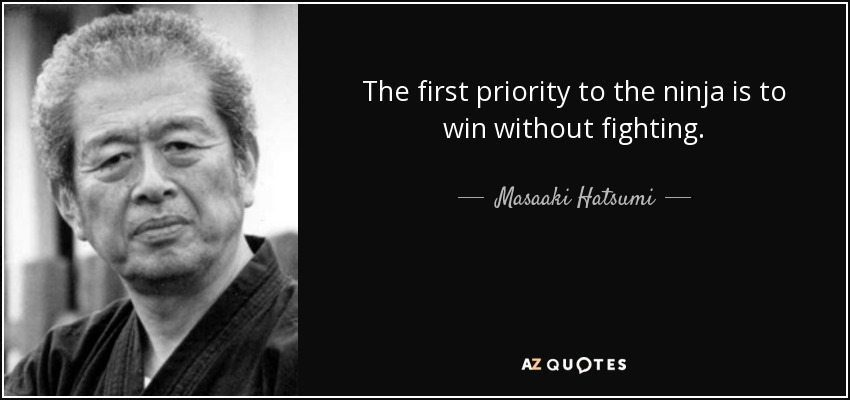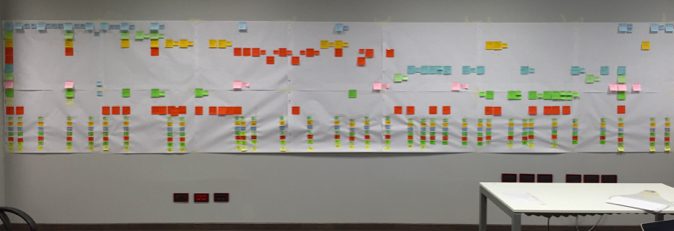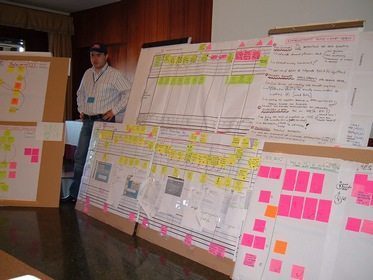
Makigami – the method for making the unknown known for process improvement
Estimated reading time: 28 minutes
Former US Secretary of Defense Donald Rumsfeld famously said there are things we know we know (“known knowns”), things we know we don’t know (“known unknowns”) and things we don’t know we don’t know (“unknown unknowns”). It’s this latter state of ignorance that is the most problematic, he said. This is true as much in the arena of foreign policy as it is for business process management. Makigami analysis remedies this.
Table of contents
Looking for something else? See these related links:
It sounds like a dreamy philosophical question: can you make significant improvements to your business processes if you don’t know what’s causing the problem or where exactly improvements can be made? Probably not. And there’s absolutely no chance if you don’t know you have a problem or could make improvements in the first place.
This is why business process mapping and value stream analysis is so important. They help you to see where things are going wrong or where they could be improved. There are a number of systems or methods to help you achieve this and one of the best – especially when your product is information rather than a thing – is the art of Makigami.
Enter the ninja

Makigami isn’t the same as origami, but funnily enough, they are both Japanese words that share a similar meaning. Origami means folding paper, and makigami means a roll of paper. Makigami is also a name for the mission scripts that were given to ninjas in medieval Japan. Think of makigami as process mapping for ninjas.
So what is Makigami?
Makigami uses a long piece of brown paper to create a highly structured process map. The map visualises, analyses and communicates any business process (Tonkin, L.A.P, p. 44), from the very start to the very end of a production or service process. RVMN Associates state in its presentation that the paper system is divided into four areas:
1. Activities performed by different parties
2. Documents/media used in communication
3. Time-analysis
4. Identified problems
Makigami does share some similarities to LEAN value stream analysis but is ideal for use in the service industry and office environments. It identifies hitherto invisible sub-activities that can go many levels down. This reveals areas for improvement or elimination and allows companies to design the very best processes.
”Cultivate the habit of thinking of your business in terms of processes, not products.”
W. Edwards Deming

Confederation of Indian Industry deputy director Jayashree Das wrote about the primary objectives of Makigami analysis:
- Understand the existing process
- Identify as many sub-processes as possible within the process
- Look for scope of improvement in each of the sub-processes
- Identify and take action on the losses to develop a highly efficient process
A Makigami example and five special features
#1 Paper & Pencils

Firstly, the traditional Makigami mapping method uses paper, pencils and colours to visualise, analyse and communicate business processes. There are famous examples of makigami maps covering entire walls and being improved on for more than 10 years. This way of doing things makes processes more concrete and allows for pieces and parts to be exchanged or removed. Once you’ve finished it, you can roll it up and store it until you’re ready for the next round of analysis. A Makigami map covers five topics:
- Activities performed by all involved parties
- Documents/media used in communication
- Communication lines
- Time-analysis
- Identified problems
#2 Lets you see the invisible
Makigami process mapping is for organisations whose product is not physical. When this is the case, the amount of loss is more than when the product is a tangible thing. Makigami aims to reveal these unseen and unknown losses. These are the 7 deadly losses (or 7 wastes):
- Defects
- Waiting
- Checking/testing
- Rework
- Stock – Overproduction
- Over-processing
- Transport – Movement
“It is specifically suited for office environments where products are not visible or tangible and where the flow of information involves wait time, handoffs, and transfers” (Tonkin, L.A.P, 2009, p. 44).
#3 Detecting non-value

As with LEAN, the key purpose of Makigami mapping is to identify non-value add activities in your processes and to eliminate them. Throughput time and handovers are typical things Makigami seeks to identify and eliminate when they slow down the process and result in waste. So now you can remove non-value adding activities giving you more time to focus on value-adding activities.
#4 Simple swimlane mapping

However, unlike the LEAN approach, Makigami mapping uses simple, hybrid swimlanes, related to function, to illustrate various processes. Along with this, it includes related documents or media to make parallel processes more visible. “Additional details include the type of information flow and the information technology systems, the time analysis and waste and problem identification” (Lynch, D.P, 2014, p. 2).
On a side note, I should mention that this is exactly how we approach our process mapping in the Gluu platform: Simple mapping of activities to functions, or roles. Learn how to create simple process maps.
#5 Standardisation
Lastly, Makigami seeks out recurring processes to standardise for maximum efficiency. There’s no point doing the same thing a different way every time or whenever a new person takes over a role. To minimise waste, reduce risk and errors, it’s better to analyse your processes and find the most efficient way of carrying them out and make that the standard.
In a similar manner, the Gluu platform allows you to reuse processes – and activities within processes – by adding them as boxes (links) in other processes. This way you can easily standardize and share work activities across.
Example Gluu features for helping process improvement
Discover how Gluu’s powerful features can streamline your process improvement efforts. With Gluu, you can easily model processes, create standard operating procedures (SOPs), manage work instructions, assign roles, handle documents, track tasks, and facilitate change communication. Experience efficient and effective process improvement with Gluu.

Reuse processes and activities
Any process or activity can be added to other processes for easy connection.

Turn instructions into reusable components
Mark a content selection to turn it into a component that can be reused by others.
How to do Makigami
There are four key principles that underpin the Makigami philosophy. Keeping these in mind ensure that when you do your Makigami analysis and identify problems, waste or areas to improve, that the solutions you develop genuinely improve things. Sometimes the solutions we invent are more problematic than the problems they sought to resolve.
- The more throughput time is minimised, the more problems are minimised.
- Mistakes are opportunities for improvement; they are allowed once, never twice.
- Any “improvement” that adds complexity is not an improvement.
- Adding investment, technology, space, resources or people is not necessarily an improvement.
According to Makigami.info, doing a Makigami analysis involves anywhere from three to 10 days. The most time-consuming part is the transition to implement the new process you have developed. It’s recommended to use a skilled facilitator to guide the Makigami analysis.
Realistically only very few critical processes can justify this kind of attention from key personnel. How often can you get people off-site for 10 days to solve a problem? With Gluu we provide a tool that allows this work to be done across time and space as people work with the process for real. Often real life work situations are where insights and ideas come out. This is the benefit of doing your process improvement work on a daily basis and not only in workshops.
Bringing Makigami into the digital age
The problem with Makigami is that it is not accessible. A large paper map is difficult to share, especially when you wish to incrementally improve it with collaboration. This can, but not always, result in a top-down process. The good news is that technology has brought the principles and methods of Makigami into one convenient cloud-based tool: the Gluu platform.
- You can make your swimlanes as long as you like
- Any number of people can collaborate on a common swimlane diagram
- You can comment on each activity and colleagues can say if they agree or disagree with a single click.
- You can record problems inside your systems and add these recordings to the relevant activities in Gluu (something that is pretty hard to do with brown paper).
Combining the best of both worlds
So how do we get the best out of the physical and the digital worlds? Here’s our challenge:
Step 1:
Gather your team and hold a half-day workshop to map a process while co-located in Gluu. You can either do it directly in Gluu via a projector or with brown paper that someone adds to Gluu afterwards.
Step 2:
Then everyone goes back to their daily work and spends some time adding ideas and issues to the relevant activities in your process.
Step 3:
After a period of time doing this, the team can meet in another day-long workshop to analyse all the ideas and issues and make improvements using the Makigami method.
One major benefit of this is both extrovert and introvert will find ways to contribute on his or her own terms. This is surprisingly important. Often the one who speaks the loudest in a workshop is not the one with the greatest insight. Remember ninjas are silent and stealthy, but also deadly effective!
I hope you have enjoyed this overview and example of Makigami. If so then please share so others can benefit as well…
👉 Recommendation: Before embarking on a Makigami analysis or any process improvement initiative, prioritize the principle that “Adding investment, technology, space, resources, or people is not necessarily an improvement.” Instead, focus on optimizing your existing resources and processes to achieve meaningful improvements without unnecessary complexity or added costs. This approach can lead to more sustainable and efficient solutions.
Conclusions
The article highlights the importance of Makigami analysis as a valuable tool for process improvement in business management. It emphasizes the need to visualize and map business processes, particularly in information-centric industries, to identify inefficiencies and optimize workflows. The introduction of the Gluu platform as a digital solution demonstrates the evolution of Makigami into the digital age, allowing for more accessible and collaborative process improvement. Overall, Makigami remains a relevant and effective approach to enhancing business processes in today’s dynamic and competitive environment.
Frequently Asked Questions
The primary objective of Makigami analysis is to identify non-value add activities within business processes and eliminate them. It aims to streamline processes by pinpointing areas of waste, reducing throughput time, and improving overall efficiency.
Makigami, unlike traditional methods, utilizes a highly structured, paper-based approach that emphasizes visualization and analysis of the entire process, from start to finish. It also specifically targets the identification of the “7 deadly losses,” which are common sources of inefficiency in information-centric industries.
The Gluu platform provides a digital solution for implementing Makigami analysis, enabling teams to collaborate effectively in real-time. It allows for the creation of swimlane diagrams, comments on activities, recording of problems, and standardization of processes, aligning with the principles of Makigami while enhancing accessibility and efficiency in process improvement efforts.
This article was first published Aug 14, 2017. It was revised on Sept 26, 2022.



